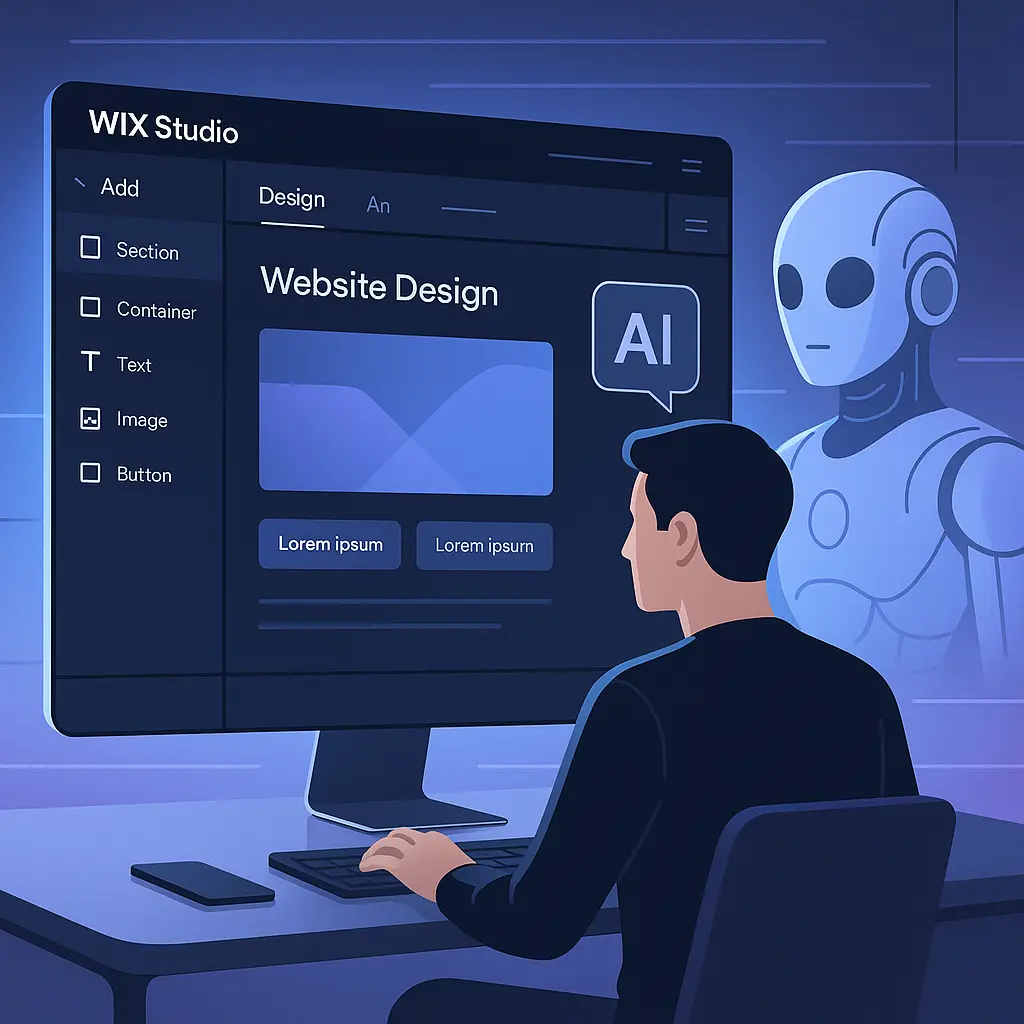How to Design Pixel-Perfect Websites in Wix Studio (2025)
Wix Studio is now one of the top professional builders for agencies and freelancers who deliver client sites in the U.S. market. It combines a precision design editor, custom breakpoints, and tools built for agency workflows, making it a strong choice for pixel-perfect design and fast client delivery.

Step 1 — Planning & Brief
Define project goals, understand U.S. audience intent, and set conversion targets before opening the editor. Create a sitemap, color system, and asset library so your workflow remains structured. Pixel perfection starts with clarity and consistency at the planning stage.
Step 2 — Setting Up Wix Studio Project
Use consistent project naming and folder structures. Assign proper roles for designers, developers, and content editors. Connect analytics and ensure the correct time zone for your client’s U.S. location.
Step 3 — Pixel Grid, Typography & Color System
Set a 12-column grid, define container widths, and establish a solid typography hierarchy. Choose accessible color palettes that meet WCAG contrast standards. Wix Studio’s font library (expanded in 2025) gives designers more flexibility to build professional brands.
Step 4 — Building Responsive Layouts and Breakpoints
Start from the desktop layout and adjust down for smaller devices. Wix Studio’s custom breakpoints help maintain design accuracy across all screens. Use fluid typography and anchor UI elements to the grid for consistent spacing and alignment.
Step 5 — Working with Images & Media for Crispness
Use WebP or AVIF formats for faster load times. Optimize hero and gallery images without sacrificing quality. Use SVGs for logos and icons to ensure crisp visuals on high-density displays.
Step 6 — Interactions, Animations & Microcopy
Add purposeful animations to create smoother user experiences. Keep motion subtle and accessible. Write clear microcopy — every button label, placeholder, and tooltip should speak directly to the U.S. audience in natural language.
Step 7 — Performance, SEO & Accessibility
Test Core Web Vitals (LCP, FID, CLS). Optimize meta tags, headings, and structured data. Add local SEO elements such as city, state, and phone details for U.S. businesses. Ensure keyboard navigation and strong color contrast for full accessibility.
Step 8 — Developer Workflows & Git Integration
Wix Studio supports GitHub and local development through its CLI. Agencies can branch, review, and merge updates seamlessly. Automate deployments using GitHub Actions for smooth CI/CD pipelines.
Step 9 — QA Checklist & Cross-Device Testing
Test your site on major U.S. devices and browsers. Verify visuals, forms, and links. Run performance and accessibility audits using Lighthouse or axe tools. Document and fix issues with screenshots and device info.
Step 10 — Launch, Tracking & Handoff
Before launch, confirm analytics, Search Console, redirects, and caching. Provide a training guide for clients and a short tutorial video showing how to edit text and images. Offer post-launch SEO maintenance to retain performance.
Templates & Example Process
Typical U.S. agency timeline:
-
Week 1 – Discovery & Sitemap
-
Week 2-3 – Design Mockups
-
Week 4-5 – Build & Responsive Adjustments
-
Week 6 – QA & Client Review
-
Week 7 – Launch & Handoff
Common Mistakes & Fixes
| Mistake | Fix |
|---|---|
| Designing only for desktop | Plan and test responsive breakpoints early |
| Heavy hero images | Use modern formats and compression |
| Ignoring content hierarchy | Finalize copy before adjusting layouts |
| Skipping accessibility | Perform automated and manual checks |
FAQ's
1. What is Wix Studio and is it good for agencies in the U.S.?
Wix Studio is a professional-grade platform with responsive design tools, custom breakpoints, and advanced workflows for agencies serving U.S. clients.
2. Can I use custom breakpoints in Wix Studio?
Yes, Wix Studio lets you set custom breakpoints for precise design control across devices.
3. Does Wix Studio support GitHub integration?
Yes. Connect your Wix Studio site to GitHub for version control and automated deployments.
4. How can I make my images look crisp in Wix Studio?
Use modern formats like WebP or AVIF, and SVGs for icons. Compress and resize images properly before upload.
5. How do I improve SEO for my Wix Studio site?
Optimize titles, meta descriptions, schema markup, and local search data. Test performance with Lighthouse and maintain fast load times.
Final Thoughts and Takeaways
Pixel-perfect design in Wix Studio combines art, structure, and precision. For U.S. businesses, it means faster load times, stronger branding, and higher conversions. Focus on responsive systems, optimized assets, and clear workflows to create stunning professional results.











